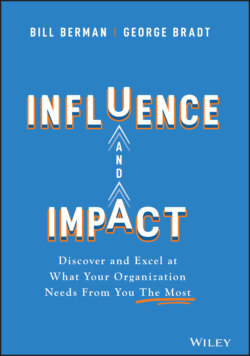Читать книгу Influence and Impact - George B. Bradt - Страница 26
End Notes
Оглавление
1 i Cooley, C. H. (1992). Human nature and the social order. Transaction Publishers.; Mead, G. H. (1962). Mind, self, and society. Chicago: University of Chicago.
2 ii Maslow, A. H. (1943). "A theory of human motivation." Psychological Review, 50: 396.; Hogan, K. (2011). The science of influence: How to get anyone to say yes in 8 minutes or less. Hoboken, NJ: Wiley.; Rock, D. (2008). "SCARF: A brain-based model for collaborating with and influencing others." NeuroLeadership Journal, 1: 44–52.
3 iii Mehrabian, A. (1981). Silent messages: Implicit communication of emotions and attitudes. Belmont, CA: Wadsworth.
4 iv Bradt, G. (2019, October). As an executive onboarding into a new role, engage intellectually, emotionally and practically—in that order. Forbes. Retrieved February 7, 2021 from https://www.forbes.com/sites/georgebradt/2019/10/22/as-an-executive-onboarding-into-a-new-role-engage-intellectually-emotionally-and-practically--in-that-order/?sh=58d89f9d5be6; Kahneman, D. (2011). Thinking, fast and slow. New York: Farrar, Straus and Giroux.
5 v Forester, J., & McKibbon, G. (2020). Beyond blame: Leadership, collaboration and compassion in the time of COVID-19. Socio-Ecological Practice Research, 2(3): 205–216.
6 vi Reina, C. S., Rogers, K. M., Peterson, S. J., Byron, K., & Hom, P. W. (2018). Quitting the boss? The role of manager influence tactics and employee emotional engagement in voluntary turnover. Journal of Leadership & Organizational Studies, 25(1): 5–18.
